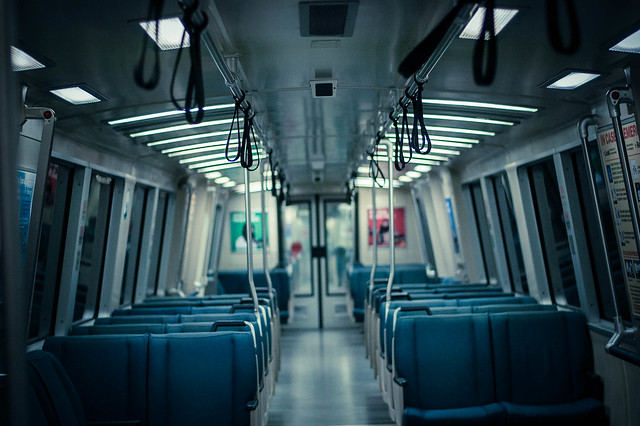 Photo credit: rafael-castillo on Flickr
Photo credit: rafael-castillo on Flickr
At EchoUser we believe that everything can benefit from design, from the most complicated software systems to the services we depend on in our daily lives. To exercise this skill, we took to the tunnels of San Francisco to illustrate how everyday experiences can be improved through thoughtful research and design.
We selected Bay Area Rapid Transit (BART), our local subway system, because it provided a ripe canvas for our Any Experience design process. The system is used by more than 100 million people each year, and it doesn’t necessarily have the best reputation. Just think of all the times someone has come into work complaining about their morning commute, and of all the disgruntled tourists frantically attempting to navigate the train stations. If only there was an elegant solution to all these problems…
We rode with passengers and conducted contextual inquiries to understand the real challenges with BART from the perspective of those it impacts the most: the riders. From Bay Area residents who rely on BART to commute to work every day to those that use it while they are visiting, everyone had something to say.
The feedback we received was not what we, or BART, expected. After early discussions with BART, we thought increased ticket prices and infrequent trains bothered people the most. In reality, the most common complaints were general cleanliness, safety, and transferring between public transportation systems. Following this were complaints about the ticketing system and the smell of some bathrooms. Basically, riders disliked everything but the ride itself.
These are all issues with fairly simple solutions compared to fixing the ride itself by adding more trains to the schedule or reducing fares. We used our Any Experience design process to come up with solutions to help BART improve the user experience. We would like to share some of the key takeaways from the study with you to keep in mind next time you attempt to fix a problem.
1. Research will save you a billion dollars
Sure, the train seats get dirty. And yes, there are probably not enough handrails for every standing passengers. But from our research, it was everything BUT the ride itself that bothered riders. So before allocating a huge budget to, in this case, redesigning the trains, find out what is actually bothering people.
2. Small changes can lead to big impact
Have you ever wondered why New Yorkers seem to love their subway system, while most San Franciscans hate theirs? A lot of this is simply good public relations. In New York City, former Mayor Bloomberg was known to take the subway to and from work alongside fellow New Yorkers. Before attempting to fix the ride itself, see if negative perceptions change when more city officials ride the BART.
3. Look at the entire experience, not just the product
It is easy to misinterpret a daily BART commute as time spent traveling in the actual train, but everything from faulty ticket trackers to smelly bathrooms and dirty train stations can leave riders with negative impressions. To improve user experience look at design holistically.
Daily rituals and routines can inspire a great design revelation. Always keep your eyes, ears, and in the case of BART, noses peeled for design innovation!